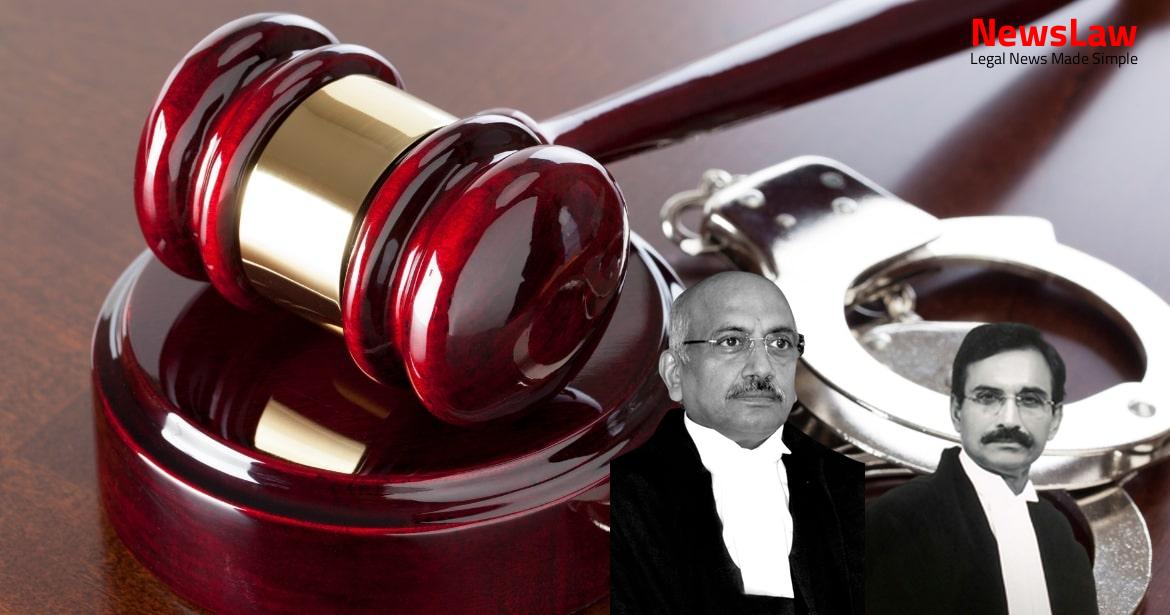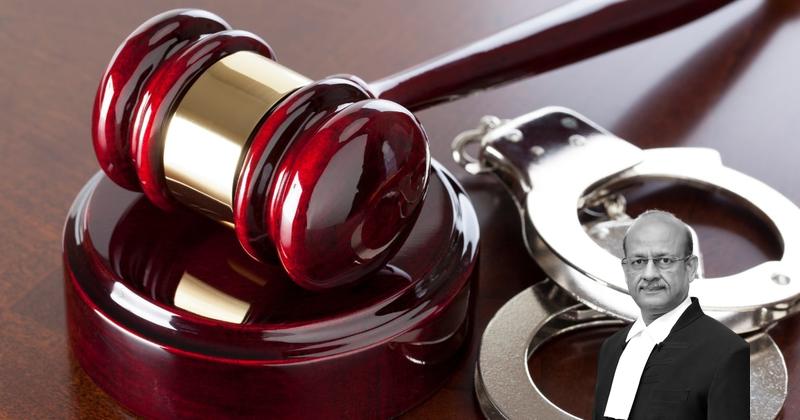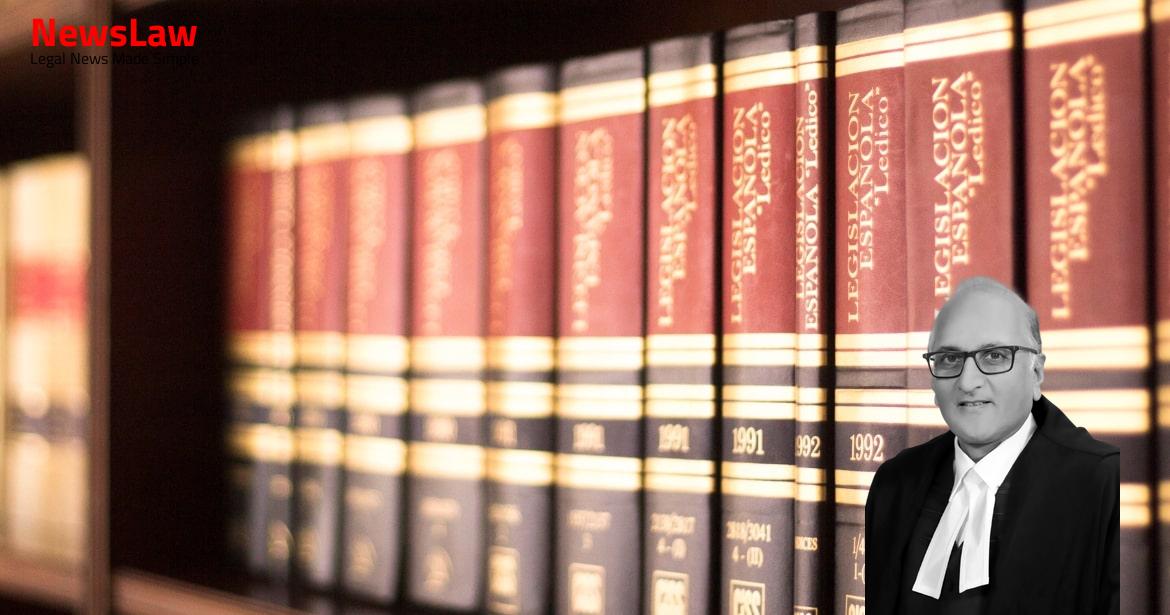An intriguing legal case unraveled by the Supreme Court of India delves into an inheritance dispute revolving around the alleged marriage between Sujathamma and Hanumanthappa. The Court’s verdict unravels the complexities of proving a marriage’s validity in inheritance claims, setting a precedent for burden of proof in such cases.
Facts
- Plaintiff Sujathamma claimed to have married Hanumanthappa on 7 March, 1986.
- Defendants denied the marriage allegations and claimed that Hanumanthappa was not fit for marriage due to health issues.
- The trial court found discrepancies in the ages provided by the plaintiff and the school records produced by the defendants.
- High Court and First Appellate Court upheld the trial court’s decision regarding the marriage and ages of the parties.
- Plaintiff filed suit claiming a share of ancestral property as Hanumanthappa’s wife.
- Defendants disputed the marriage by stating that any marriage document produced by the plaintiff was concocted.
- Genealogical tree shows the lineage of the parties involved in the dispute.
- The First Appellate Court held that the marriage between the plaintiff and Hanumanthappa is valid.
- The High Court in second appeal confirmed the existence of the marriage between the plaintiff and Hanumanthappa.
- The certificate (Ex. P/1) was not considered a marriage certificate under the Special Marriage Act, 1954, but rather a piece of evidence supporting the plaintiff’s claim of marriage.
- The High Court emphasized that a customary Hindu marriage can only be proven through necessary observances.
- Defendants cannot deny the marriage and then argue its validity in court.
- It was determined that the plaintiff and Hanumanthappa were underage at the time of registration, rendering the marriage void ab initio.
- The absence of evidence of necessary marriage ceremonies in accordance with the Hindu Marriage Act, 1955, led to the conclusion that the agreement of marriage registration was insufficient to prove marriage.
- The trial court noted the plaintiff’s admission that the marriage was rushed for property reasons.
- The First Appellate Court affirmed the trial court’s findings of the marriage’s existence.
- Ex.D/3, the plaintiff’s date of birth certificate, was deemed inadmissible as proof due to lack of authenticity.
- The lack of proof of the plaintiff’s age led to the error in the trial court’s conclusion about the marriage validity.
- Ex.P/1 was determined not to be proof of marriage solemnization under the Special Marriage Act, 1954.
- The trial court ruled the marriage void ab initio under Section 24 of the Special Marriage Act, 1954, due to both parties being underage.
- Both parties appealed the decision, resulting in the dismissal of the suit and entitlement of defendant Nos. 2 to 5 to a share of the property.
Also Read: Seniority Determination in Uttarakhand Pey Jal Nigam: Regulation 23 vs Government Order
Analysis
- Plaintiff’s claim is based on the alleged marriage with her Uncle, Hanumanthappa.
- The High Court was erroneous in assuming that denial of marriage by defendants precludes them from contesting the validity of the marriage.
- The plaintiff failed to establish any custom allowing marriage within prohibited degrees or any evidence of solemnization through customary ceremonies.
- No valid marriage could be proven as per the Hindu Marriage Act, 1955 due to lack of evidence of customary rites and ceremonies.
- The burden of proof of marriage lies solely on the plaintiff, who presented an agreement (Ex.P/1) not recognized as a marriage certificate and lacking ceremony proof.
- The alleged marriage between individuals of prohibited degrees is void as per the law.
- The plaintiff’s case for inheritance relies on proving the valid marriage, which remains unsubstantiated.
- Hanumanthappa’s ill health and swift demise post the alleged marriage adds complexity to the validity of the union.
- The defendants contest the marriage claim alleging it as a fabrication to claim Hanumanthappa’s property.
- The Court in Salekh Chand (Dead) by LRs v. Satya Gupta & Ors. discussed the claim of adoption under the Hindu Adoption and Maintenance Act, 1966.
- The Court held that the claim of adoption must be proved with satisfactory evidence as per the provisions of the Act.
- It was emphasized that mere oral testimony is not sufficient to establish a valid adoption.
- The judgment highlighted the importance of adhering to the legal requirements outlined in the Act for a valid adoption claim.
- The decision set a precedent for the stringent proof required in adoption cases under the Hindu Adoption and Maintenance Act, 1966.
- The case is based on a marriage agreement without proof of customary ceremonies or rites.
- The plaintiff cannot inherit the estate without proving the marriage.
- No evidence of the performance of saptpadi as required by the Act.
- Absence of pleading or proof of any customs to support the marriage claim.
- The argument of marriage validity in the Vokkaliga community lacks judicial precedent or evidence.
- The burden of proving the marriage lies with the plaintiff.
- The plaintiff failed to provide evidence of the marriage.
Also Read: The Case of Circumstantial Evidence: Conviction Upheld by Supreme Court of India
Decision
- Present appeal allowed
- Judgment and decree of Trial Court restored
- Original names used in the judgment
Also Read: High Court’s Ruling on Quashing of Proceedings in the Case of Sri K. Sampath Kumar
Case Title: RATHNAMMA Vs. SUJATHAMMA
Case Number: C.A. No.-003050-003050 / 2010



